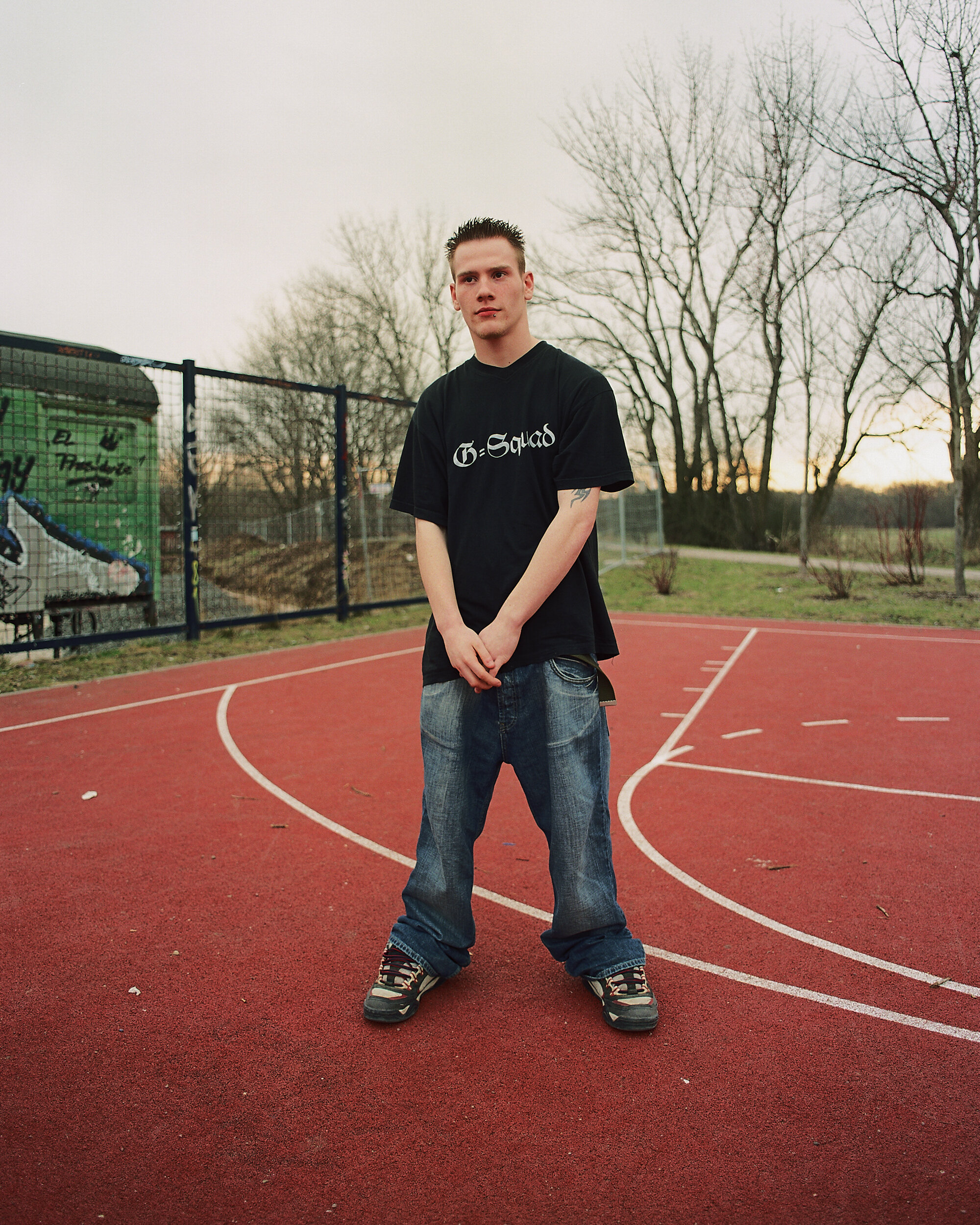
Weimar Paradies
The onset of twilight heralds the kids’ time: because in the evening the high-rise community of Weimar-West belongs to them.
Weimar-West, the city quarter built in the 80’s and isolated from the rest of the idyllic cultural city of Weimar, faces challenges like a high level of unemployment, an aging population, conflicts between foreigners and neo-Nazis and a poor image. Since 2001, the quarter has been peripherally integrated into the program “Social City”.
There is not much for the kids to do here. But, between the high-rises, the shopping center and the sparsely planted landscaping known as “Paradise”, they have found nooks and crannies where they can hang out together. They don’t meet in each other’s flats; but rather meet at twilight just about every evening in less than spectacular places in public areas – behind the supermarket, in front of a high-rise, a pathway with benches and a basketball hoop. This is the microcosm that most of them never leave. They are more concerned with themselves, their roles in their groups, their relationships, the latent boredom and the search for their own styles.
Communities like Weimar-West can be found all across Europe. The ambitious projects for the creation of functional working-class communities at the edge of cities have been transformed to a social terrain of certain difficulty. The question of the connection between urban space and juvenile development is becoming more and more relevant. How do these children grow up in such communities and how do they perceive themselves ?


























